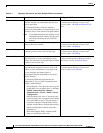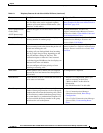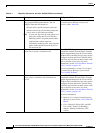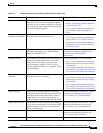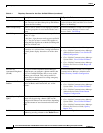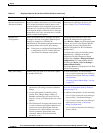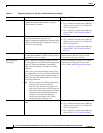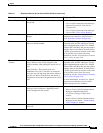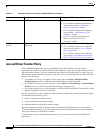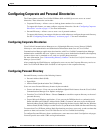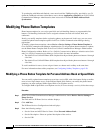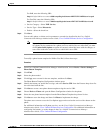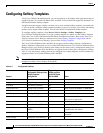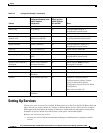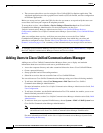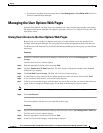
5-16
Cisco Unified IP Phone 8941 and 8945 Administration Guide for Cisco Unified Communications Manager 8.5 (SCCP and SIP)
OL-20851-01
Chapter
Telephony Features Available for the Cisco Unified IP Phone
Join and Direct Transfer Policy
Some JTAPI/TAPI applications are not compatible with the Join and Direct Transfer feature
implementation on the Cisco Unified IP Phone 8941 and 8945. In order for these applications to control
and monitor these phones, you must configure the Join and Direct Transfer Policy to disable join and
direct transfer on the same line or possibly across lines. You can configure the Join and Direct Transfer
Policy for the following:
• To configure the policy for all phones on the system, choose System > Enterprise Phone
Configurations from Cisco
Unified Communications Manager Administration.
• To configure the policy to a group of phones, choose Device > Device Settings > Common Phone
Profile from Cisco
Unified Communications Manager Administration.
• To configure the policy on an individual phone, configure the Join and Direct Transfer Policy in the
Phone Configuration for the specific phone.
Because this parameter can be configured in three different windows, the setting that takes precedence
is determined in the following order:
1. Device Configuration window settings
2. Common Phone Profile window settings
3. Enterprise Phone Configuration window settings.
When you change the setting of the Join and Direct Transfer Policy Parameter, you must check the
“Override Common Settings” box for the setting to take effect. The default policy is to have Same line,
across line enabled for join and direct transfer.
To determine the proper setting for this parameter, refer to the documentation of the JTAPI/TAPI
application.
Video Support Enables video support on the phone. For more information refer to:
• Cisco Unified Communications Manager
Administration Guide, “
Conference
Bridge Configuration” chapter.
• Cisco Unified Communications Manager
System Guide, “Understanding Video
Telephony” chapter.
• Cisco VT Advantage Administration
Guide, “Overview of Cisco VT
Advantage” chapter.
Voice Messaging
System
Enables callers to leave messages if calls are
unanswered.
For more information, see the following:
• Cisco Unified Communications Manager
Administration Guide,
Cisco Voice-Mail
Port Configuration.
• Cisco Unified Communications Manager
System Guide,
Voice Mail Connectivity to
Cisco Unified Communications Manager.
Table 5-1 Telephony Features for the Cisco Unified IP Phone (continued)
Feature Description Configuration Reference



